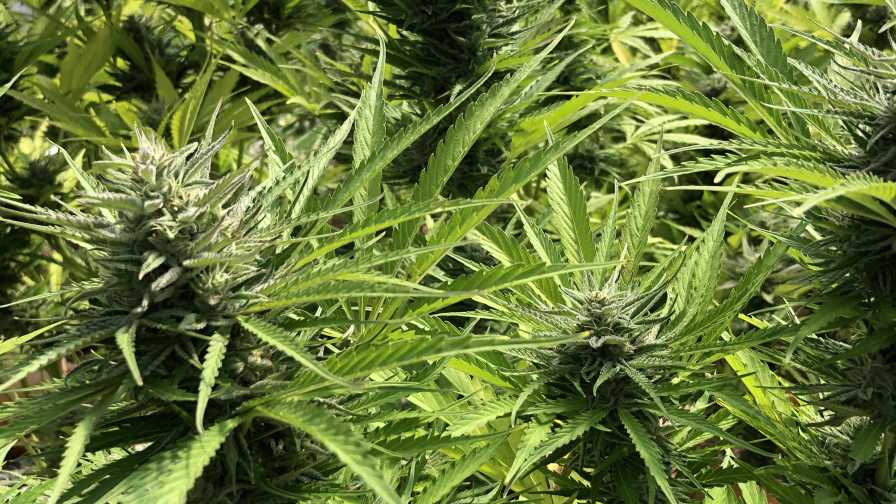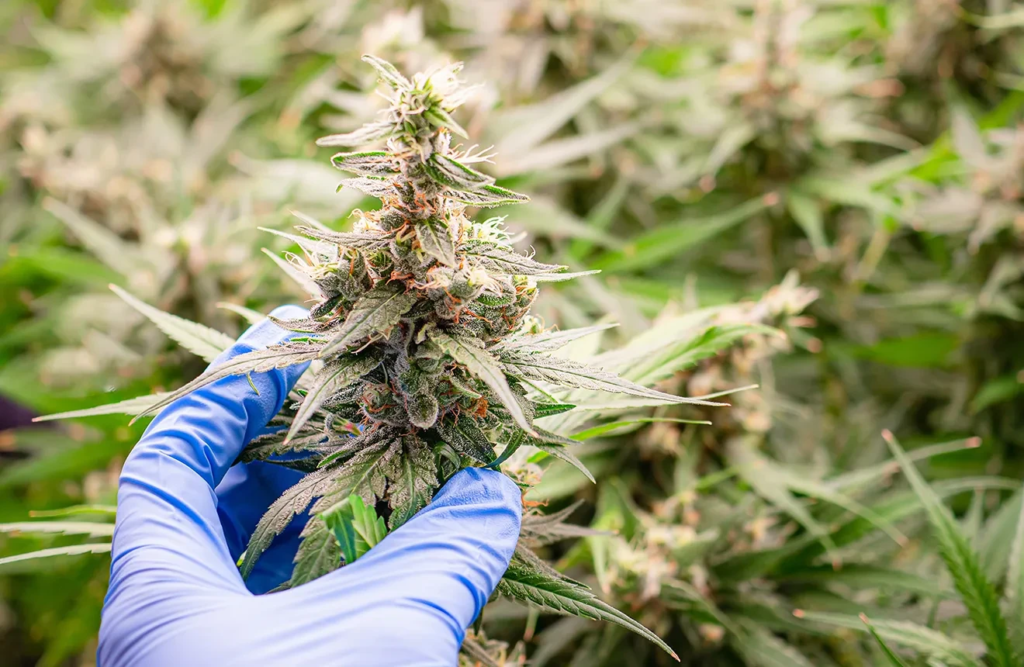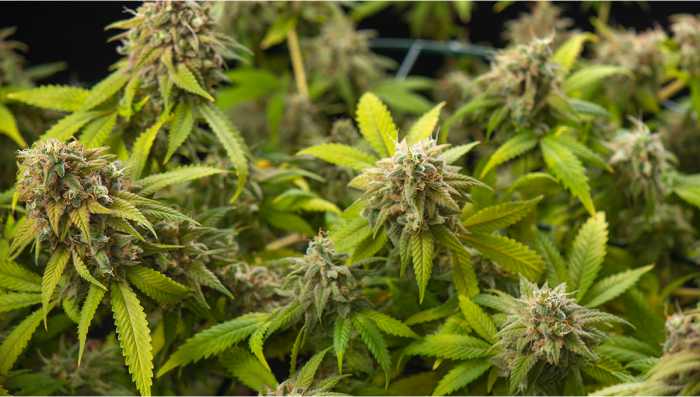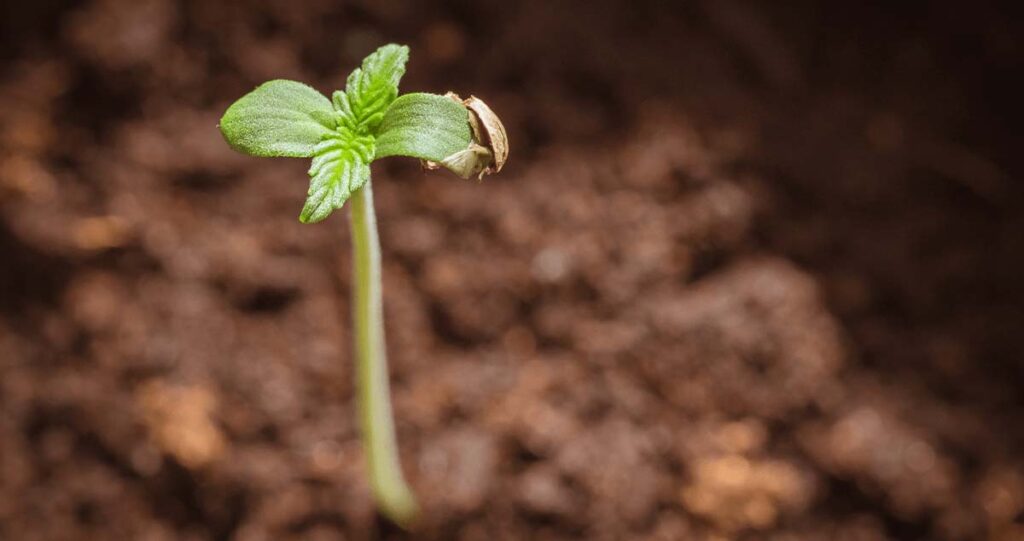Whether you’re new to growing cannabis or you’ve been growing pot for years, auto-flowering strains are possibly the best way to go. You could be growing autoflowers indoors in soil or setting up a hydroponic autoflower grow ; it doesn’t matter. Autoflowering seeds are ready for harvest in just eight weeks while still producing potent effects.
For the most part, growing autoflowers indoors or outdoors is the same as growing regular marijuana, except it’s a lot easier. However, to grow the best cannabis, you need to do more than know how to grow auto-flowering seeds. You’ll also need the best supplies. Don’t worry; a Pot for Pot has you covered.
What Does “Autoflowering” Mean?

Autoflowering seeds are typically a mixture of cannabis Sativa or Indica with Cannabis Ruderalis, a species native to Russia. People don’t grow Cannabis Ruderalis on its own because it typically lacks a high degree of THC content. But because this species grows automatically after seven weeks and fares well in cold weather, these traits have made them desirable to use for interbreeding.
An auto-flowering cannabis strain switches from the vegetative stage to the flowering stage automatically instead of requiring closely timed hours of light and dark. Photoperiod flowering seeds start to bloom after the summer solstice, while auto-flowering seeds flower after a specific phase of the development period. In other words, they grow automatically (hence their name, “auto-flowering”) when they reach the right size.
Choosing Your Location
As we said at the beginning, autoflowers can be grown anywhere due to their sturdy and resilient nature. However, if you are wondering if there is a specific climate that all autoflowers prefer, the simple answer is, there is not.
Autoflowering weed is available in a variety of strains . Some are Indica dominant and prefer cooler temperatures, while others have more Sativa genetics and grow best with large amounts of light. What’s different about an autoflower is that it can grow in situations that a photoperiod version cannot. That’s thanks to its rubbish, also known as Ruderalis, background. Therefore, do not panic if you are in an extremely cold or warm climate. Find the appropriate strain, then choose the auto-flowering option.
How do autoflowers perform outdoors?
You can grow autoflowers anywhere, but you will get the best results if you grow them outdoors. The only consideration you’ll need to make is the amount of sunlight your plants receive. Autoflowering plants should have at least 12 hours of light daily. However, it is even better if they can get about 16 hours, as this will promote optimum growth.
This is when you should be paying attention to the strain. If you reside along the Equator, select a strain that thrives in tropical climates. On the other hand, if where you live has colder temperatures, select strains that are best suited for those temperatures. Regardless of the climate, you want to make sure your plants are exposed to a minimum of 12 hours of light if you want them to produce something worthwhile.
In general, auto-flowering weed thrives in tropical climates. This is because the plants are exposed to more than 12 hours of light, which promotes optimum growth. In a tropical climate, you can have several (about four) harvests in a year because of the plant’s short lifecycle. In this type of climate, you can also grow auto-flowering marijuana plants year-round. The biggest consideration is excess heat. If the temperatures rise to above 80°F, you may want to invest in some shade so that your plants don’t burn or suffer from heat stress.
In cold climates, you won’t be able to grow year-round, but you can grow outdoors during the summer, as long as you ensure a minimum of 12 hours of light and protect your plants from frost.
Autoflowers and Lighting
Autoflowering seeds do not need a change in their light cycles like regular marijuana seeds. Now, that doesn’t mean auto-flowering marijuana plants don’t need light. However, it does mean that they will continue to grow whether or not the light source is ideal. If you want to make it better for your plant, you can provide as much light as you wish. You could even buy marijuana grow lights and shine them on your plants all day long – but you don’t have to.
This characteristic makes growing autoflowers outdoors perfect when you take advantage of mother nature’s natural light source. Whereas most plants can only grow during a specific season, autoflowers can successfully pull off two to three seasons instead of one. As long as you germinate your seeds by the beginning of spring, protect your plants from extreme temperatures (the 90s and above), and the humidity stays between 70 and 90%, you can enjoy a very long outdoor growing season.
How to Grow Autoflower Plants
Use this step-by-step auto flower grow guide to go from seed to harvest.
Week 1: Germination
It usually takes three days for autoflowers to germinate. This process is when the seeds come alive. Then, the root travels into the soil and leaves sprout above ground.
To start germinating your seeds, you will need the proper soil mixture. In general, autoflowers will need fewer nutrients than regular seeds; still, they will need rich potting soil to help support their rapid growth.
A typical do-it-yourself potting soil recipe includes compost, perlite, and peat moss, and perhaps a tiny amount of vermiculture. The easiest option, however, is starting with A Pot for Pot’s Complete Kit. It includes our Seedling Pot and Pellet, which is perfect for germinating auto flower seeds.
Once your seeds have sprouted, you’ll need to transplant them into their potting soil. If you aren’t using A Pot for Pot, you will need to carefully remove your seedling from its current home and place it in another. This process, unfortunately, can lead to shock. With a separate seedling system, such as the Seedling Starter Kit, this risk is reduced.
Week 2: Late seedling phase
At this point, your seedling has begun creating energy from its light source. If you are growing indoors, you’ll want to use LED lights to give your auto-flowering plant some light. Choose LEDs – they save energy and direct less heat. Plus, they are affordable. You’ll only need a single light to grow a large plant in an indoor autoflower grow setup .
You don’t need to use an LED light if you’re growing outdoors, although you can. Our Light for Pot can convert nearly any space into a suitable spot for growing autoflowers indoors.
Week 3-4: Vegetation is flourishing
Yay, your plant has reached the vegetative stage. That means you should be focusing on creating the best environment. This is when you’d add the reinforcements. But, wait, you don’t have that? If you started with the Complete Kit, you would.
This week is when the important stuff starts to happen. The fan leaves are sprouting, enhancing the photosynthesis process, and increasing your plant’s ability to create potent flowers. You should focus on keeping your plant watered (but not too watered!), maintaining a constant temperature, and making sure it has light (if growing indoors). Trust us; this is not the time to be figuring out fertilizers.
If you are growing autoflowers indoors, this is also the time for starting low-stress training if you’re into that sort of thing. Training is helpful; however, it can also be risky and should only be done during the early part of the vegetative stage. Training helps to form buds receive the most energy from their light source – and that is a good thing.
Week 5-6: Flowering
In week 5, small, ‘hairy’ sacs start to form on the nodes. These will become sticky buds.
As the flowering stage proceeds, you’ll want to continue lowering the humidity if you are growing indoors yet keep your plants well-watered. It is very easy to develop mold during the flowering stage, and that can ruin all of your hard work. That’s why you need to pay attention to the amount of water in the air and soil. Using a watering can help you keep track of how much you are giving your plants. We include one in our Complete Kits.
Week 7-8: Monitor and prepare
We’re almost done! See how easy an autoflower can grow? In week 7, you’re going to focus on maintaining the environment. If you have your plants outside, make sure it’s not too hot or wet. If they are inside, check the humidity. You should be near 40% humidity instead of the 70% you started with during the vegetative period.
You also want to look at the soil. Use a magnifying glass to identify any pests. Look at the leaves for signs of nutrient deficiency. If you’d like to be precise, you can use the Smartphone Camera Lenses included with A Pot for Pot’s grow kits.
If you used any nutrients, you’d want to start the process of flushing on week 8. This means you stop giving your plants anything other than water. You don’t want any of that stuff in your final harvest. Flood the plant’s soil so that any excess chemicals are cleared before the plant can eat any more of them. This will prevent those chemicals from remaining in the plant when it’s time to harvest. Repeat the flooding process multiple times for up to two weeks, but don’t overdo it. Allow your pot to dry out between flushings.
Finally, it’s time to do a little trimming. Find some trimmers and remove the small fan leaves from the bottom nodes. You can also cut off any fan leaves near the top that doesn’t look that great. This process will help your plant get more light and reduce the chance of mold developing.
Week 9: It is almost harvest time
You have finally reached the point where your time and energy are about to reap good results. However, you must maintain the perfect conditions before you officially get there, so your plant remains infestation-free.
Continue following the lighting, temperature, humidity, and watering guidelines that you’ve been following since the beginning of week 7. The fan leaves might look rust-colored or otherwise discolored; this is perfectly normal.
Week 10-12: Harvest time!
You’ve reached the best part of this autoflower grow guide – the end. Depending on your specific strain, you may be ready for harvest anywhere from 10-12 weeks. You’ll know it’s time when most of the trichomes are whitish, and the pistils are brownish-red.
Keep in mind regardless of how much you trained your plant, some buds automatically position closer to the light, and as a result, will finish ripening first.
Especially when growing autoflowers indoors, your results can vary depending on the strain and the quality of the seeds. If your plant seems to progress slower or faster than others, don’t let it bother you. Come harvest time; you may find that you were worrying about nothing.
Growing auto-flowering marijuana plants is already easy, but it’s even more so with A Pot for Pot. We don’t just provide the best pot; we also offer the best soil, nutrients, and tools for maintaining your marijuana garden. And we provide step-by-step instructions in our Complete Grow Guide, and ongoing online grow support. So if you want it easy and fast, growing autoflowers indoors in soil (or outdoors, weather permitting) with a Pot for Pot is hands-down the simplest way to go about it.
The Pros of Autoflowering Cannabis Seeds

1. Faster Flowering and Harvest
Autoflowering cannabis plants grow quickly and flower a lot faster than their photoperiod counterparts do. For example, some autoflowers can flower in as little as three weeks to 30 days after the seed is planted, while many photoperiod varieties take months before they transition into the flowering stage from the vegetative growth phase . If you want the fastest harvest, auto-flowering varieties are your surest bet.
2. The Plants are Small and Compact
One of the biggest pros (out of many pros and cons of auto-flowering seeds) is their small size. Because of their Cannabis Ruderalis heritage, auto-flowering marijuana plants tend to be smaller and more compact when compared to the ordinary Sativa, Indica , and hybrids of these two.
This smaller size makes auto-flowering cannabis plants suitable for growing in confined spaces , such as a closet or on your balcony. Their compact size also makes it easier to look after. It’s simple – if your plant grows past six feet and you can’t see the top of it, it will be harder to manage. Autos, however, rarely exceed four feet, so it is easy to trim, train, or otherwise care for them during the different stages of their growth.
3. No Change to the Light Cycle
Autoflowering cannabis seeds combine the genetics of Sativa, Indica (or hybrids of them) with Cannabis Ruderalis. Cannabis Ruderalis is a variety very few people know about because it is naturally smaller, with smaller buds that produce very little to no THC.
Older strains of Cannabis Ruderalis had few desirable qualities, such as an ability to grow very fast. This is because it is native to Siberia, where the growing season is shorter and daylight hours are fewer. As a result, Ruderalis, outside of its original growing zone, adapted to maturing quickly and switching to the flowering stage regardless of how many hours of sunlight it is receiving.
Autoflowering cannabis seeds exhibit this attribute. They switch into a flowering mode as a result of their genetic programming rather than environmental factors, such as the amount of light they are receiving each day. Therefore, you don’t have to bother changing to a 12/12 light cycle to induce the flowering phase in auto-flowering marijuana plants. Autoflowering strains require less maintenance , making them easier to grow.
4. They Are More Resistant
Another key benefit of auto-flowering marijuana plants is an easy growing experience due to their Ruderalis heritage. Because of their fast adaptation, as detailed above, these plants are hardy and resistant to several adverse conditions. Ordinary cannabis plants can easily succumb to many diseases and pests , but auto-flowering plants will stand up to such a threat and survive. Similarly, auto-flowering strains are also resistant to mold, overfeeding, and underfeeding, while regular photoperiod varieties will be adversely affected by these conditions.
If you live in an area where the climate can change rather quickly, or you aren’t too particular about maintaining the ideal growing conditions for cannabis, then opt for auto-flowering strains since these are more forgiving when conditions aren’t exactly right.
The Cons of Autoflowering Cannabis Seeds

1. Lower Yields
Autoflowering cannabis plants are sometimes called dwarf plants due to their typically smaller size when compared to ordinary marijuana plants. While this smaller size comes with some benefits, as discussed earlier, those growing auto-flowering plants should be content with a lower yield since a small plant cannot sustain bigger, dense buds.
This lower yield can be an issue for the commercial grower who wants to maximize the returns earned from each plant. However, for a home grower, the yield produced from an auto-flowering plant is often more than enough. If it is not, it’s just as easy to grow multiple plants or choose auto-flowering cannabis seeds with higher than normal yields.
While lower yields might be a turn-off to some growers, the plus side is that auto-flowering cannabis plants are easier to grow indoors. Autoflowering seeds are good for at-home growers who don’t need to grow massive volumes and growers who live in compact spaces.
2. Lower THC Content
Ruderalis plants provide many of the desirable traits of auto-flowering plants, but they also produce one noticeably undesirable one. The buds of auto-flowering plants tend to be less potent in terms of their THC content . THC is responsible for giving marijuana users a “high,” so lower THC concentrations in a plant mean that you will not get as high as someone who has used buds from a plant with a higher THC content.
However, don’t let this dampen your zeal for auto-flowering cannabis plants. You can purchase auto-flowering cannabis seeds with higher levels of THC if you want a bigger kick from your plants.
3. Vulnerability to Grower Errors
The rapid growth rate of auto-flowering seeds is one of its major attractions, but this growth rate can be a double-edged sword. Faster growth can mean bigger problems if you make a mistake and the plant doesn’t have enough time to recover.
This is most noticeable when training your plants. There are two ways to train your plants. One way is low-stress training (LST). That’s when you’d bend the plant’s branches while they are still soft and pliable. The other training method is called super cropping. This method is very stressful to the plant since it is done when the branches have become harder, so they take longer to recover from this training exercise.
4. You Can’t Clone Autoflowering Cannabis Plants
Sometimes you fall in love with a specific plant. Many times, a certain attribute (yield potential, for example) is so desirable that you’d like to reproduce it in future plants. This is doable through the process of cloning.
For photoperiod marijuana varieties, cloning is simple. You simply cut a small piece of the plant, and that cutting will yield another plant with the exact attributes of the mother plant. For auto-flowering varieties, this, unfortunately, does not work. You can only grow these types of plants from seed.
You should also note, however, that growing from clones is not the same as growing from seed. Although cloned plants will have the same attributes as their mother plant, they are also not as hardy as seed plants and are more susceptible to errors during the growing process.
5. Loss of Control
Agriculture has grown into science where professional cultivators can enjoy varying levels of control over their crops. In grow labs around the world, cultivators play with ways to delay the flowering phase of their photoperiod marijuana varieties. They do this to create bigger plants that subsequently yield a more abundant harvest.
Such control isn’t possible for growers of auto-flowering cannabis plants since these varieties change states (from vegetative growth to flowering) based on their age rather than on external environmental conditions. Purists who want some control over the growth process may therefore shy away from auto-flowering cannabis seeds.
Since auto-flowering seeds need more light, they can be slightly more costly if you’re just looking at your electricity bill. That said, auto-flowering seeds also require fewer nutrients during the vegetative cycle. As a result, the costs end up evening out. For more information on growing weed cheap, check out our article .

